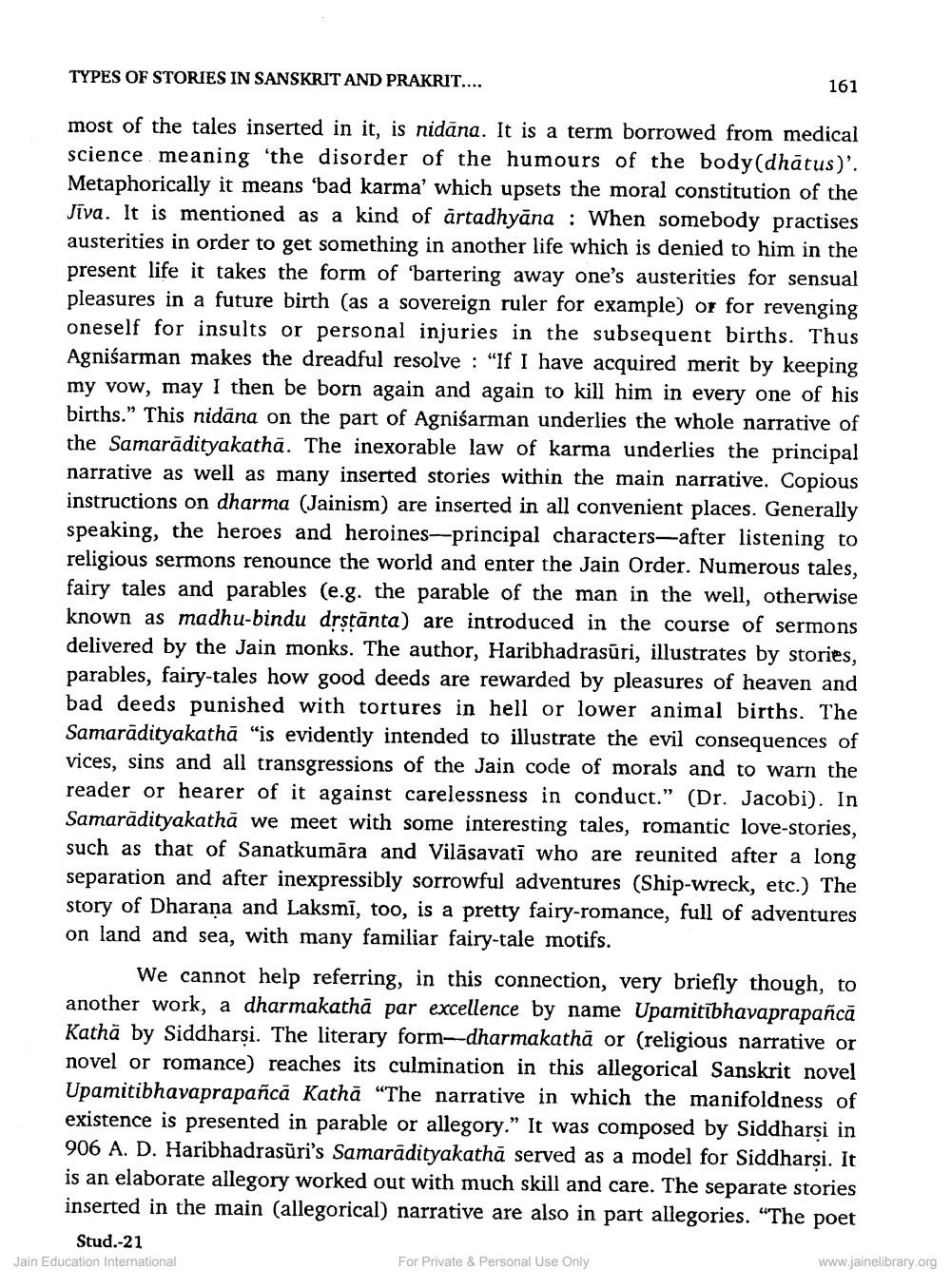________________ TYPES OF STORIES IN SANSKRIT AND PRAKRIT.... 161 most of the tales inserted in it, is nidana. It is a term borrowed from medical science meaning the disorder of the humours of the body(dhatus)'. Metaphorically it means "bad karma' which upsets the moral constitution of the Jiva. It is mentioned as a kind of artadhyana : When somebody practises austerities in order to get something in another life which is denied to him in the present life it takes the form of bartering away one's austerities for sensual pleasures in a future birth (as a sovereign ruler for example) or for revenging oneself for insults or personal injuries in the subsequent births. Thus Agnisarman makes the dreadful resolve : "If I have acquired merit by keeping my vow, may I then be born again and again to kill him in every one of his births." This nidana on the part of Agnisarman underlies the whole narrative of the Samaradityakatha. The inexorable law of karma underlies the principal narrative as well as many inserted stories within the main narrative. Copious instructions on dharma (Jainism) are inserted in all convenient places. Generally speaking, the heroes and heroines-principal characters-after listening to religious sermons renounce the world and enter the Jain Order. Numerous tales, fairy tales and parables (e.g. the parable of the man in the well, otherwise known as madhu-bindu drstanta) are introduced in the course of sermons delivered by the Jain monks. The author, Haribhadrasuri, illustrates by stories, parables, fairy-tales how good deeds are rewarded by pleasures of heaven and bad deeds punished with tortures in hell or lower animal births. The Samaradityakatha "is evidently intended to illustrate the evil consequences of vices, sins and all transgressions of the Jain code of morals and to warn the reader or hearer of it against carelessness in conduct." (Dr. Jacobi). In Samaradityakatha we meet with some interesting tales, romantic love-stories, such as that of Sanatkumara and Vilasavati who are reunited after a long separation and after inexpressibly sorrowful adventures (Ship-wreck, etc.) The story of Dharana and Laksmi, too, is a pretty fairy-romance, full of adventures on land and sea, with many familiar fairy-tale motifs. We cannot help referring, in this connection, very briefly though, to another work, a dharmakatha par excellence by name Upamitibhavaprapanca Katha by Siddharsi. The literary form-dharmakatha or (religious narrative or novel or romance) reaches its culmination in this allegorical Sanskrit novel Upamitibhavaprapanca Katha "The narrative in which the manifoldness of existence is presented in parable or allegory." It was composed by Siddharsi in 906 A. D. Haribhadrasuri's Samaradityakatha served as a model for Siddharsi. It is an elaborate allegory worked out with much skill and care. The separate stories inserted in the main (allegorical) narrative are also in part allegories. "The poet Stud.-21 Jain Education International For Private & Personal Use Only www.jainelibrary.org




